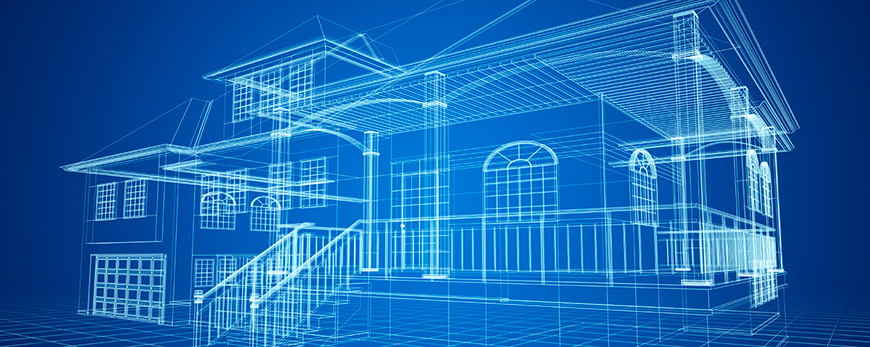Changing Spaces: The Vision of CDA Architects for Modern Living
Changing Spaces: The Vision of CDA Architects for Modern Living
Blog Article
A Thorough Review of Architectural Styles and Their Influence on Modern City Preparation and Development
Building styles have actually long worked as a mirror to the societal worths and technical developments of their time, playing an important role in forming modern-day city preparation and growth. From the grandeur of Neoclassicism to the utilitarian approach of Brutalism, each design has actually presented unique concepts that affect urban appearances and functionality. As contemporary difficulties emerge, consisting of sustainability and neighborhood demands, understanding these historical frameworks ends up being vital. The resulting discussion not only notifies future style methods yet likewise raises pertinent inquiries concerning the balance between heritage and development in our evolving city landscapes.
Historical Review of Architectural Styles

As societies transitioned through the Center Ages, Gothic style emerged, characterized by its verticality and intricate describing, matching the spiritual goals of the age. The Renaissance marked a rebirth of classic ideals, merging art and style in cutting-edge manner ins which influenced subsequent styles across Europe.

Today, building styles remain to advance, driven by globalization and sustainability issues, mirroring a dynamic interplay in between heritage and innovation. This historical introduction underscores the relevance of style as a mirror of societal development and as a stimulant for urban advancement.
Trick Architectural Styles Explained
The variety of architectural styles shows the myriad impacts that form our built environment, each symbolizing distinctive features and cultural importances. Secret building designs consist of Timeless, Gothic, Baroque, Innovation, and Postmodernism, each representing unique historical contexts and aesthetic approaches.
Classic style, rooted in old Greece and Rome, emphasizes symmetry, proportion, and the use of columns (cda architects). In contrast, Gothic design, growing in the center Ages, is characterized by pointed arches, ribbed vaults, and flying buttresses, creating an angelic high quality in basilicas. Baroque design, arising in the 17th century, is noted by majesty, intricate embellishment, and a vibrant interaction of light and darkness
Innovation, which obtained energy in the early 20th century, prioritizes function over type, using brand-new products like steel and glass to develop minimalist structures. Postmodernism, reacting against the austerity of Innovation, accepts eclecticism and historical recommendation, commonly including lively aspects and paradox.

Influence On Urban Planning
In forming the growth of cities, architectural styles considerably affect city preparation decisions. The option of building design commonly dictates the looks, capability, and overall character of urban atmospheres.
Moreover, architectural styles can affect zoning guidelines and land utilize plans. Urban organizers have to take into consideration the dominating building fads when making areas, making certain that brand-new growths integrate with existing frameworks. This factor to consider promotes cohesive urban landscapes and enhances community identity.
The implementation of specific building designs can likewise influence socioeconomic factors within a city. For example, high-end modern layouts may attract affluent residents and here organizations, bring about gentrification, while extra inexpensive housing remedies could prioritize useful and sustainable layouts to fit diverse populations. Ultimately, the interplay in between building designs and city planning creates vibrant cities that show both historic context and contemporary demands, shaping the lived experiences of their occupants
Sustainability and Modern Style
Building designs play a critical duty in resolving modern obstacles, especially in the realm of sustainability. As urban locations expand and ecological issues increase, contemporary style progressively welcomes lasting layout concepts that focus on power effectiveness, source preservation, and very little eco-friendly effect.
Contemporary architectural motions, such as biophilic layout and green design, advocate for frameworks that balance with their surroundings, using all-natural materials and promoting biodiversity. These styles often integrate sustainable power resources, such as solar panels and wind turbines, to decrease dependence on fossil gas and reduced carbon footprints.
Furthermore, the combination of sophisticated innovations, such as wise structure systems, improves energy monitoring, enhancing resource use while making certain owner comfort. Innovative water administration approaches, consisting of rainwater harvesting and greywater recycling, more contribute to sustainable metropolitan atmospheres.
Especially, sustainability expands past ecological problems; it incorporates social and financial measurements too. By promoting neighborhood wellness and promoting inclusivity, modern architectural designs straighten with lasting advancement goals. The advancement of building methods continues to form durable cities that not only meet the demands of the existing however likewise safeguard the future for generations to come.
Area Involvement in Style
Community involvement in style serves as an important bridge between engineers and the populations they serve, making certain that the developed environment mirrors the requirements and aspirations of its customers. This collective process welcomes community participants to contribute their understandings and preferences, cultivating a sense of ownership and obligation toward the areas they inhabit.
Reliable community involvement utilizes numerous techniques, such as workshops, studies, and public online forums, to collect diverse viewpoints. These methods facilitate a two-way dialogue, permitting designers to recognize local contexts while encouraging locals to articulate their issues and wishes. This inclusivity not only improves the layout quality however additionally promotes social equity by attending to the unique difficulties encountered by marginalized groups.
Additionally, area interaction can result in innovative recommended you read services that might not arise in a typical design process. By incorporating neighborhood knowledge and cultural worths, engineers can develop spaces that resonate more deeply with customers, boosting usability and sustainability. Eventually, focusing on area involvement in design processes results in atmospheres that support social communications, assistance health, and reinforce community ties, thereby playing a critical function in forming modern-day city landscapes.
Verdict
Architectural designs have profoundly affected contemporary city planning and development, mirroring Visit Your URL progressing cultural and technological contexts. As cities proceed to grow and adapt, the recurring dialogue between building heritage and contemporary design concepts will remain crucial in developing inclusive, vivid areas that boost high quality of life and advertise social equity.
Report this page